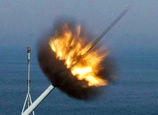
In 1517, Portugal began trade contacts with China.
In 1553, Portuguese merchants began transporting bulk opium to China.
In 1578, ancient Chinese doctor Li Shizhen recorded not only poppy capsules and seeds but also opium as a new drug in his medical book "Compendium of Materia Medica," saying it the "body fluid of poppy." However, the opium used only as a drug at the time came mainly from the tributes of foreign countries.
In 1589, the government of Ming dynasty took opium as a medicinal material for the first time to list it in dutiable goods.
In 1615, the government of Ming dynasty made it clear in the "Provisions on Dutiable Goods" that every 10 jin of opium was collected tax of 1.73 copper cash coins. Since then, it was legal for Portuguese to bring opium to China as long as they paid taxes to China customs.
In 1624, Dutch colonialists invaded and occupied Taiwan of China. They not only transported large quantities of opium to Taiwan but also brought the method of smoking opium to the region. Soon afterwards, the method of opium smoking was spread from Taiwan to Chinese mainland.
In 1688, the government of Qing dynasty ordered to increase 1.5 times of tax rate on imported opium, namely collecting a tax of three liang silver ingot (one liang equals to 50 grams), to reduce the imports of opium by rising price and lowering profit.
In 1727, the British East India Company first shipped the opium purchased from Madras to Guangzhou for sales and earned fat profit, leading to rampancy of opium business.



















![]()
